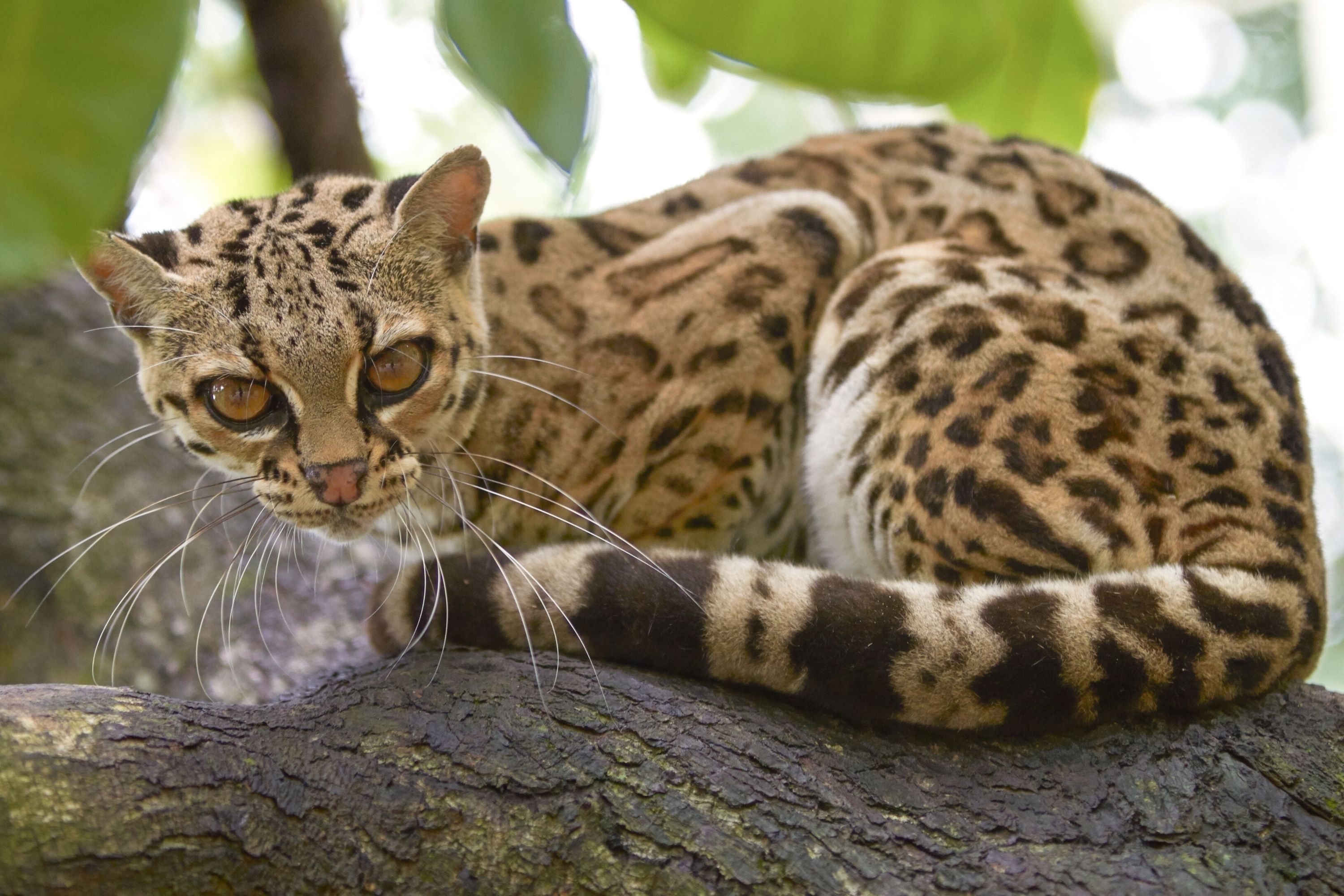Margay
(Leopardus wiedii)

Description
The margay (Leopardus wiedii) is a small wild cat native to Central and South America. A solitary and nocturnal cat,it lives mainly in primary evergreen and deciduous forest. The scientific name Felis wiedii was used by Heinrich Rudolf Schinz in 1821 in his first scientific description of the margay, in honour of Prince Maximilian of Wied-Neuwied, who collected specimens in Brazil. The margay is very similar to the larger ocelot (Leopardus pardalis) in appearance, although the head is a little shorter, the eyes larger, and the tail and legs longer. It weighs from 2.6 to 4 kg (5.7 to 8.8 lb), with a body length of 48 to 79 cm (19 to 31 in) and a tail length of 33 to 51 cm (13 to 20 in). Unlike most other cats, the female possesses only two teats. Its fur is brown and marked with numerous rows of dark brown or black rosettes and longitudinal streaks. The undersides are paler, ranging from buff to white, and the tail has numerous dark bands and a black tip. The backs of the ears are black with circular white markings in the centre. The margay is distributed from the tropical lowlands in Mexico through Central America to Brazil and Paraguay. In Mexico it has been recorded in 24 of the 32 states, ranging northward up the coastal lowlands and Sierra Madres as far north as the US border states of Coahuila, Nuevo Leon, and Tamaulipas in the east and southern Sonora in the west.The southern edge of its range reaches Uruguay and northern Argentina. It inhabits almost exclusively dense forests, ranging from tropical evergreen forest to tropical dry forest and high cloud forest. The margay has sometimes been observed in coffee and cocoa plantations. The only record from the USA was collected sometime before 1852 near Eagle Pass, Maverick County, Texas and it is currently considered locally extinct in Texas. The margay's presence in the United States is considered "uncertain" by the IUCN Red List. Fossil margay remains have been collected in Pleistocene deposits in Orange County, Texas along the Sabine River, and it is thought to have ranged over considerable portions of southern Texas at one time. Fossil evidence of margays or margay-like cats dubbed Leopardus amnicola has been found in Florida, Georgia, and South Carolina dating to the Pleistocene, suggesting that they had an even wider distribution in the past
Taxonomic tree:







